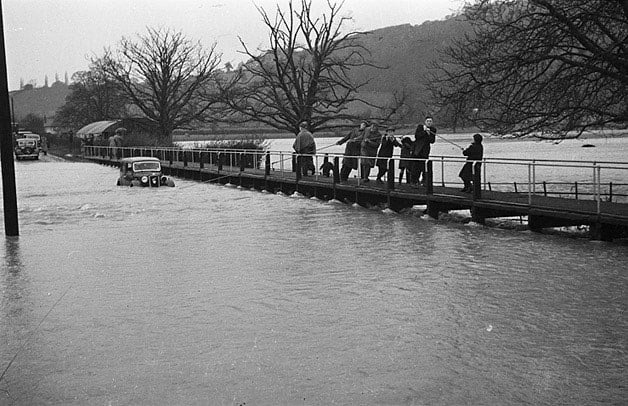Yesterday there was torrential rain, lashing Wales for a few hours and creating widespread flooding which shut down roads and trains. This morning, I walked past the River Severn on my way in to run a seminar at the University of Sustainable Development. The Severn is one of the largest and most lively rivers in the UK, but the river this morning was far beyond its usual path, a gushing, brown expanse carrying rain and runoff. It was a striking juxtaposition, creaking civil infrastructure neglected in part through decades of climate change denial, and a loud and lively admission of climate change intensified storms, likely a weather pattern which landed in the United States last week as a series of devastating hurricanes.
I’ve been studying the ways that we can communicate across species barriers, and the challenges to our conceptions of “normal” communication which result from these encounters. Over the summer I taught a course at a theological college, and we engaged in a contemplative ecology walk one rainy afternoon. That walk took us past the River Mersey in Manchester. As I pressed students to engage with other creatures around us in an act of contemplative communication, we paused to wonder about what sort of spiritual beings the different creatures around us might be and how they might be speaking to us. Rivers commmunicate through motion: pace, push, and flow. Like trees (and the subject of a workshop some weeks before), they communicate slowly, expressing conviction and presence by moving land and shifting their path in subtle ways, gently carrying other little beings of soil and rock with them to new homes. Communication through motion is not inaccessible or unknown to humans, though our everyday lives do sometimes deny us joyful motion, scholars have plumbed the communicative potential of dance, and I think we would do well to observe symmetries in the art of intention motion by human communicators and nonverbal nonhumans.
As we paused on our walk at the Mersey, I observed to the group that the sides of the river had been filled with cement in a form of cheap and efficient flood protection. This river could not move. It had been rendered mute and inert, in what could be seen as an act of cruelty and disdain for the intended ecological presence of a river. As the students and I reflected on the Mersey and the forms of presence it might be offering to us, and we moved beyond our initial appreciations for its benefits for anthropos, in the therapeautic conveyance of pace, strength, patience, forebearance. It was impossible to ignore the ways that the river brought life to the whole biotic community of the city. Yet at the same time, when I asked the group to push past our own lifeworlds and to try and imaginatively inhabit that of the river and consider what sort of presence it had to itself, it was hard to ignore the suffering it must endure as a creature, full of potential expressiveness, yet lashed to an artificial course, still generously holding down (for the sake of the health of other creatures) toxic runoff from centuries of mining and industry sedimented under its body. I spend some of my contemplation in quiet solidarity with those other traumatised creatures, including humans, who have had their communication taken from them.
This morning many news outlets decried the destructive potential of our waterways in Wales. I do not deny the tragic consequences of short-sighted development schemes and climate denialism placing houses close to waterways with little to protect them. And I note the ways that the victims of suffering in recent weeks are overwhelmingly minoritised and poor. However, I do not lament the speech of the river Severn this morning. At the same time that it is giving us life and protecting us from self-inflicted harms, it is speaking to us – screaming it the loudest possible voice (I wonder, is it rage? grief? fear?) – can we find our way back to the old ways of listening to the land and paying heed to its wisdom?


I hadn’t really thought about how it would feel to be a river before, constrained in more and more concrete to hold you down because you keep growing more rageful, or confining you to a culvert like Birmingham’s Rea, so you are forced to skulk underground i don’t think I’d like it. Rivets are supposed to meander, it is their coping mechanism.
I have recently been enjoying Mossy Earth’s Youtube videos about returning beavers to a Scottish farm in efforts to restore the riparian ecosystem there.
Your post made me wonder if we could therefore view the beavers as medical professionals in this context, taking steps they feel best to heal the river with a little dam here, a flood and flow there. They know the rivers deeply and intimately and perhaps understand what is needed to heal the constraints we have set out.
https://www.mossy.earth/projects/riparian-restoration-glassie-farm
Oh yes, this is lovely. Thanks so much for sharing good words, insights and references!